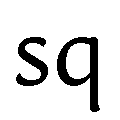

Volume 21 (2002)
Aspekte zum Betrieb einer Anlage zur externen Phosphor-
und Schwefelwasserstoffeliminierung (Pelicon) am Burgsee in Bad
Salzungen – Ein Erfahrungsbericht
Aspects to the running of a phosphorus- and hydrogen
sulphide elimination plant (Pelicon) at Lake Burgsee in Bad Salzungen -
Report on recent experiences
Thomas
Andres
The
highly eutrophic lake Burgsee in Bad Salzungen/Thuringia (Abb. 1) was
formed by several sinkholes due to tectonic activities. Chemical,
physical and biological parameters of lake Burgsee have been examined
between 1999 and 2002. The lake water has been treated by an external
phosphorus elimination plant (PEP), called Pelicon (Abb. 2), from
summer 2000 to fall 2002. The TP content of the water body decreased
from 340 kg in 1999 to 60 kg in 2002, about 751.000 m³ water have
been treated during the operation period of Pelicon. After most of the
total phosphorus in the pelagial had been eliminated it was to be
examined whether the weakly bounded phosphorus complexes in the
sediment would be released, but unfortunately there was not enough time
to examine that aspect.
The water was
treated with aluminium salts and iron salts to precipitate the SRP and
high levels of hydrogen sulphide. The aluminium concentration in the
mixolimnion, i.e. 0 – 15 m, increased during the project to 78
µg/l, compared to 20 µg/l before the operation of Pelicon.
Although Al is described as a toxic agent in fresh waters by several
authors, no harmful effects on water organisms could be found nor
could have been expected because of the neutral pH range or high Ca
loading of lake Burgsee. No distinctive changes in the iron
concentrations in the pelagial could be found. Probably there is a
correlation between the elimination of about 680 kg hydrogen sulphide
and the decrease of the sulphate content.
| Editor-in-Chief: | Tomasz Goslar |
| Co-Editors: | Małgorzata Latałowa Wojciech Stankowski Krystyna Szeroczyńska |
| Secretary |
Mariusz Lamentowicz |